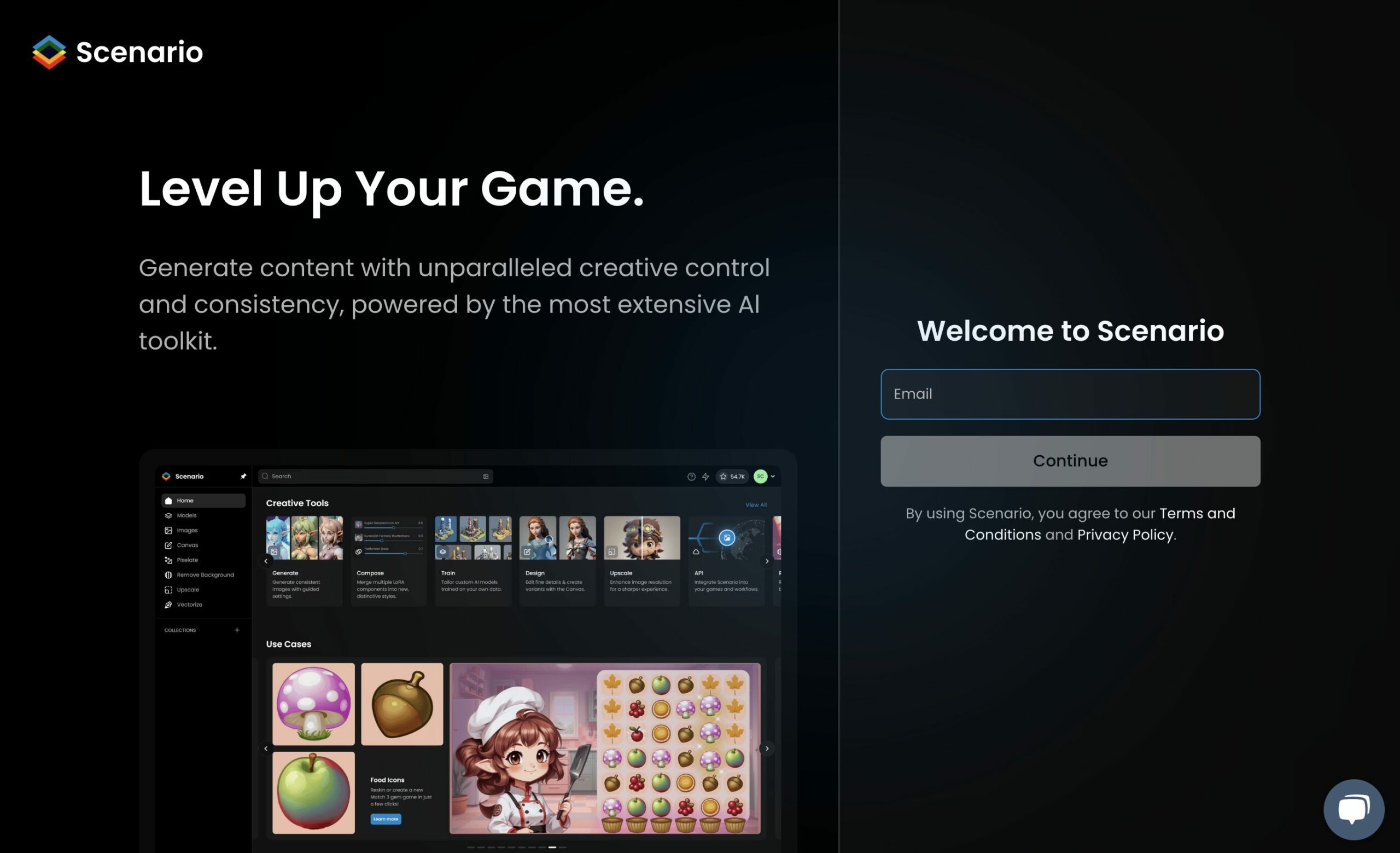So many things in the gaming world consist of details. If the character should look memorable, designers will add unique details such as hairstyles or accessories. For the gameplay, developers will think about interesting quests or intricate fighting mechanics. But none of this makes sense without the game environment design.

Usually, people think about the gaming environment at the last point. But have you ever thought about why we like our favorite games so much? There are so many answers: outstanding 2D or 3D graphics, fascinating plots, or even breathtaking soundtracks. But if these games had just boring elements of the environment such as big rocks or typical trees, there wouldn’t be any opportunity for the projects to be successful and popular.
What is Game Environment Design?
Game environment design comes into play when the game needs to stand out with something. For instance, if developers create a horror game, they will take dark and scary elements into account to set the special atmosphere.
ALSO READ: 15 Must-Have PlayStation Exclusive Video Game Art Books
If designers work on RPG games, they will create as many unforgettable elements taking the gamers’ breath. So, such elements make video game environment artists very valuable specialists. With their skills and creativity, they can easily turn the game from tedious to captivating and visually stunning.
Realism and Details in City Environment
Exactly like any other gaming element, creating a realistic city game environment art is very complex. Designers should display all its variety in the small space while keeping all ideas together and saving the historical or fantastical concepts.
Take, for example, The Witcher 3: Wild Hunt by CD Projekt. It is a perfect case of competent approach to 3D city environment modeling. We can’t see there any modern architecture but proximity and strong emphasis on the historical environment don’t go unnoticed.
Every city and village in the game feels alive. All NPCs who go about their daily routines add astonishing realism to the game. In general, environment artists perfectly combined realistic architecture with other dynamic elements to create a breathing world. Consequently, they completely cloud players’ minds in the atmosphere.
One more successful example is the game Coreborn by Blankhans & RetroStyle Games game art studio. Cities are one of the most significant parts of everything in this game, especially the gameplay. The game is organized in such a way that players can build, enhance, and level up their cities, showcasing all their strategic and creative skills.
The coolest thing is that Coreborn game environment artists let gamers tell their own stories by interacting with different building materials, other players, and various additional mechanics. As a result, RetroStyle Games demonstrated how important it is to create a realistic world gamers can interact.

How important is optimization to the Urban Game Environment?
Optimization isn’t just necessary in the urban game environment development. It is an indispensable part of the urban planning game. A smooth game experience is a direct consequence of the connection between detailing and performance. It can be achieved due to LOD optimization in the first place. Implementing such systems is particularly effective in large cities where numerous buildings and objects are visible. In this case, a perfect example is the Assassin’s Creed series.
ALSO READ: 2 Ways To Play PS5 In Tesla Exposed
Occlusion culling is a very useful instrument because it helps reduce the processing load by excluding objects that are hidden behind others. Games such as Grand Theft Auto V use this tool a lot to optimize performance in dense urban environments.
Texture atlasing is very helpful while working on game environment design. How does it improve performance? Combining textures into atlases helps reduce the number of draw calls. This is especially beneficial in urban environments with numerous small objects such as in the Watch Dogs 2.
So, it drives us to the point that video game environment artists should always consider the hardware requirements and make sure the game runs smoothly across a range of system configurations. In another case, there might appear a situation like with Fallout 76. The game faced criticism for technical issues, including performance problems, glitches, and inconsistent frame rates.

Interactive Elements in Urban City Design
You can ask any developer: “Hey, how can I make my game look realistic?”. The answer will be: “Make it as interactive as possible”. The importance of interactivity in urban game environment art cannot be overstated. If you want to enchant gamers deeper into the game, interactivity will be a key factor in the fulfillment of your idea.
Mostly, environment artists use dynamic NPCs to add interactivity to the game. They can follow daily routines, engage in conversations, and react to the player’s actions. The Assassin’s Creed series, especially titles like Assassin’s Creed: Unity, features dynamic NPCs with realistic behaviors. Due to that, a lot of gamers pointed out a high level of lively and authentic urban environment.
Making the environment destructible allows players to interact with their surroundings in meaningful ways. For instance, Battlefield 4 with its intense battles where buildings can be destroyed in a minute, alters the landscape and thereby totally changes the dynamics of the gameplay.
ALSO READ: Why Is My Gaming Laptop So Slow? 5 Ways To Fix It!
We shouldn’t forget about interactive objects and environments too. If 3D environment modeling includes objects or environmental elements that players can interact with, the game will be much more interesting. The variety of opportunities is huge: opening doors, turning on/off lights, or manipulating machinery. Deus Ex: Mankind Divided game provides a cyberpunk cityscape with numerous interactive elements, from hacking electronic devices to moving obstacles strategically.

Game Map Size – is bigger definitely BETTER?
For some games, the size of maps is very important. For another one, it doesn’t matter at all. Everything depends on the specific goals and design principles of the game and gaming environment. Anyway, there are two general approaches to game maps: open-world maps with lower density and densely populated maps with high event density. We will explain both of these approaches in 2 examples: Red Dead Redemption 2 and Minecraft.
Diverse landscapes are the main features of Red Dead Redemption 2. While the map is enormous, the density of events and activities is lower compared to its overall size. Due to this, players’ experience isn’t so intense and tight, and they can calmly explore the game world.
While working on creating such video game environments, artists use a modular approach. It allows working with detailed modules that can be combined to form a larger world. For instance, Red Dead Redemption 2 uses a modular design to create diverse regions with distinct characteristics.
ALSO READ: How To Build A Gaming Laptop The Right Way—7 Steps
While Minecraft isn’t a traditional city-based game, it still serves as a good example of a different approach. It is based on a procedurally generated world where players can shape and explore their surroundings. In this case, despite the vastness, the density of events, structures, and interactions is high.
Environment artists of Minecraft and other games like this use procedural generation to create diverse landscapes. Among them are terrain, caves, fields, etc., which provide a sense of endless exploration within a compact space.

Advanced Lighting and Texturing Techniques
Everyone knows that some recent advancements, such as ray tracing and physically based rendering (PBR), brought the realism of game environment design to a new level. Not in the least it happened because of significant improvements in lighting and texturing techniques.
Ray tracing is a rendering technique that simulates the way light interacts with objects in a scene. Cyberpunk 2077 utilizes this technology to create realistic reflections on surfaces, accurate shadows, and intricate lighting. In general, it made the futuristic atmosphere of Night City unforgettable and outstanding.
PBR is a rendering approach that simulates the physical properties of materials to achieve more realistic graphics. The Last of Us Part II uses PBR to create lifelike textures and materials. From weathered surfaces to realistic skin shaders, game environment art shows big attention to detail in this game. All of that sets the emotional and gritty atmosphere of the post-apocalyptic world.
Nowadays, a lot of environment artists often use global illumination, dynamic day-night cycles, and realistic light behavior, to create extra realistic environments. For instance, Metro Exodus employs such techniques to create a post-apocalyptic world with atmospheric unique lighting. The game’s use of light boosts the overall sense of tension and realism in its dark forgotten environments.

Tools for Designing Urban Game Environments
While creating urban planning games, ideas and concepts are extremely significant. But you can’t make anything worthy without appropriate tools for designing urban game environments. A lot of companies use different instruments to work with 3D environment modeling and the most helpful are showcased by RetroStyle Games studio.
ALSO READ: 10 Ways To Optimize Laptop For Gaming
Game Engines
Whether you choose Unity or Unreal Engine, you can create memorable game environment design. In general, Unity is a popular game engine known for creating 2D and 3D urban environments, handling lighting, physics, and scripting. In return, Unreal Engine is renowned for its high-quality graphics and realistic rendering capabilities. It offers a powerful suite of tools for designing urban landscapes with advanced lighting, materials, and effects.
V-Ray
V-Ray is a rendering engine used to provide advanced rendering capabilities, including global illumination, ray tracing, and physically based rendering. While V-Ray is not commonly used in real-time game engines due to its focus on offline rendering, it plays a significant role in pre-rendered cutscenes, cinematic sequences, high-quality visualizations, and realistic urban gaming environments.
Procedural Generation Tools
These instruments are very helpful as they allow to creation of complex urban layouts, buildings, and environments. One of them is Houdini, a powerful procedural generation tool that is widely used for generating diverse and realistic cityscapes. It enables developers to procedurally generate city layouts, complete with streets, buildings, and infrastructure.
Simplygon
Simplygon is an optimization and 3D data simplification tool used to reduce the complexity of 3D models. By generating simplified versions of models with fewer polygons, Simplygon helps optimize performance in various video games. Nowadays, this tool is widely used in the gaming industry to ensure that 3D models are efficiently displayed at different levels of detail.
Insights from Game Environment Studios
A lot of outstanding specialists leave comments about game environment design. For instance, Sarah Wang, senior environment artist of Respawn Entertainment (Apex Legends, Titan Fall) notices that AAA game content has been getting bigger and bigger. Therefore, she recommends focusing on improving the quality of modern games if they want to stay modern and successful.
Asim A. Steckel, an experienced game environment artist, notices that perfect game environment design is impossible without a deep understanding of the needs and goals of other departments in a game studio. This is also a tip from him: learn as much as possible and be one big team with your studio.
In general, the perspectives and trends constantly evolve as technology continues to advance, and industry professionals continue adapting to new challenges and opportunities.

Is There a Future for Urban Game Environments?
Urban game environment design stands at the intersection of technology and creativity. Thus, designers and developers have the opportunity to redefine the gaming experience by pushing the boundaries of what is possible in the design of virtual cities. Nowadays, urban game environments are not about creating stunning landscapes anymore. It’s a fascinating story with dynamic worlds that boost player’s experience and catch their attention.
The future of urban game environments is full of possibilities. It’s like a canvas awaiting the opportunity to deliver unforgettable experiences. The environment artists must harness the power of cutting-edge tools. As a result, the integration of real-time ray tracing, AI-driven procedural generation, and advancements in virtual reality offer a lot of possibilities to create hyper-realistic urban environments.
As designers, let’s embark on this journey with a spirit of exploration and dedication to craft urban game environments that not only dazzle the eyes but also stir the imagination. The city of the future in gaming is not just a backdrop anymore. Nowadays, it’s a huge sphere of creativity and art that is waiting to be discovered.
Remember to share and bookmark this website to stay up to date on all the hottest news in the gaming industry.


